The Monday Charge: March 25, 2024
As the financial world scrutinizes the latest signals from the Federal Reserve, a collective sigh of relief seems to be emerging from the markets. The Fed's recent projections, steadfast from their December stance, suggest a trio of 0.25% rate cuts in 2024,

This is our Monday article, focusing on the large cap S&P 500 index. Just the information you need to start your investing week. As always, 100% generated by AI and Data Science, informed, objective, unbiased, and data-driven.
The biggest movers last week on price and volume (Large Cap S&P 500)

Price and volume moves last week for every stock and sector (Large Cap S&P 500)
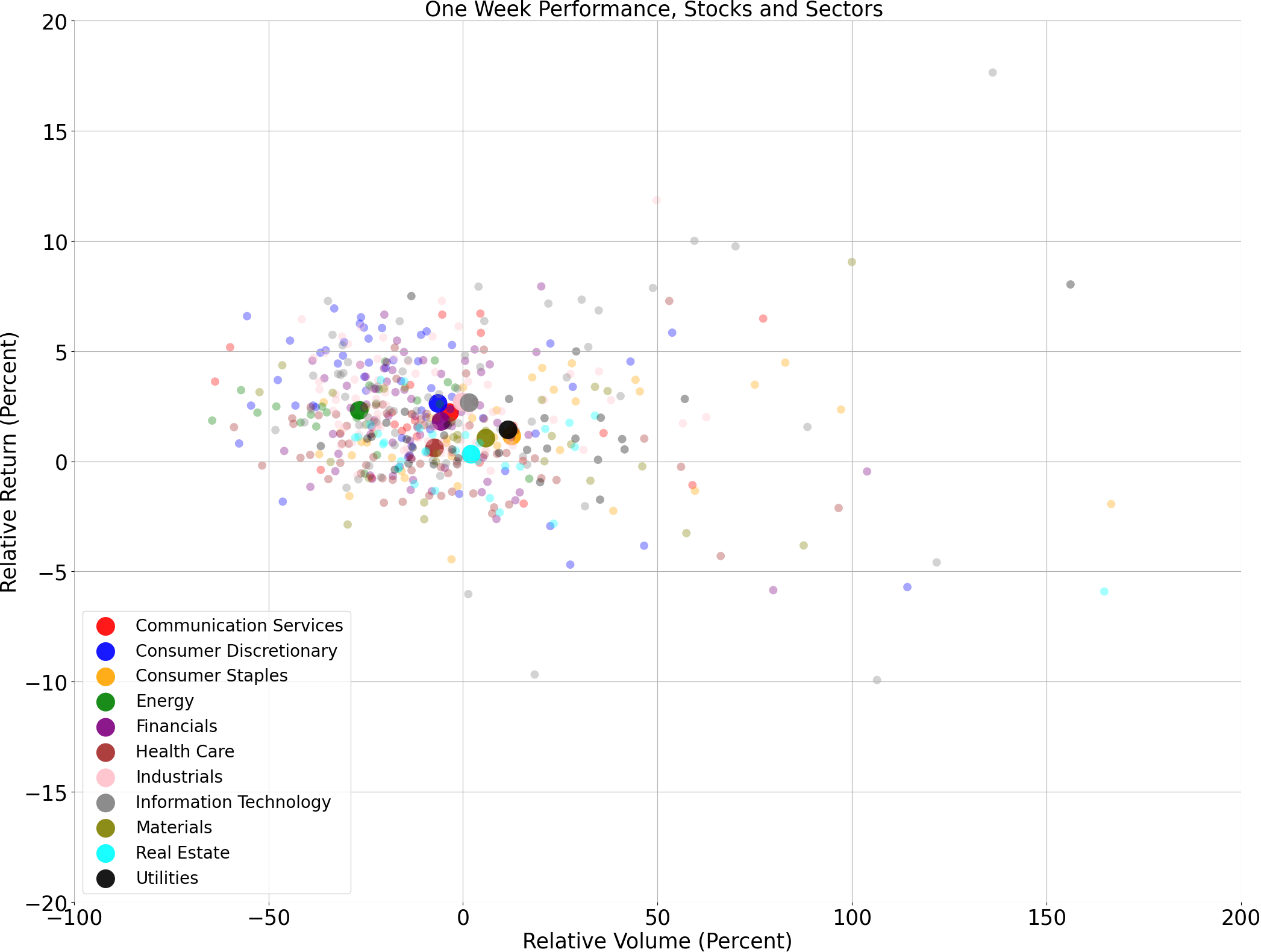
A technical analysis across indices
S&P500
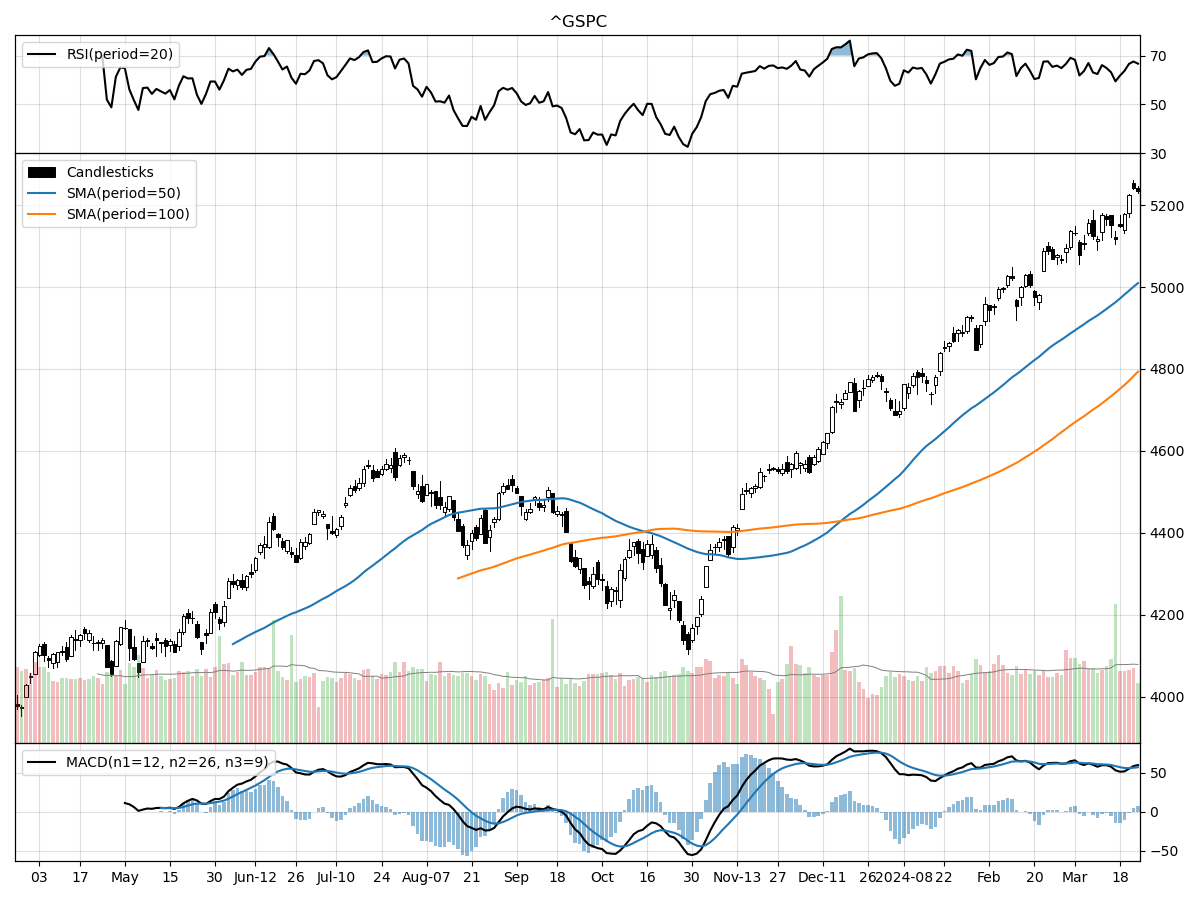
Nasdaq
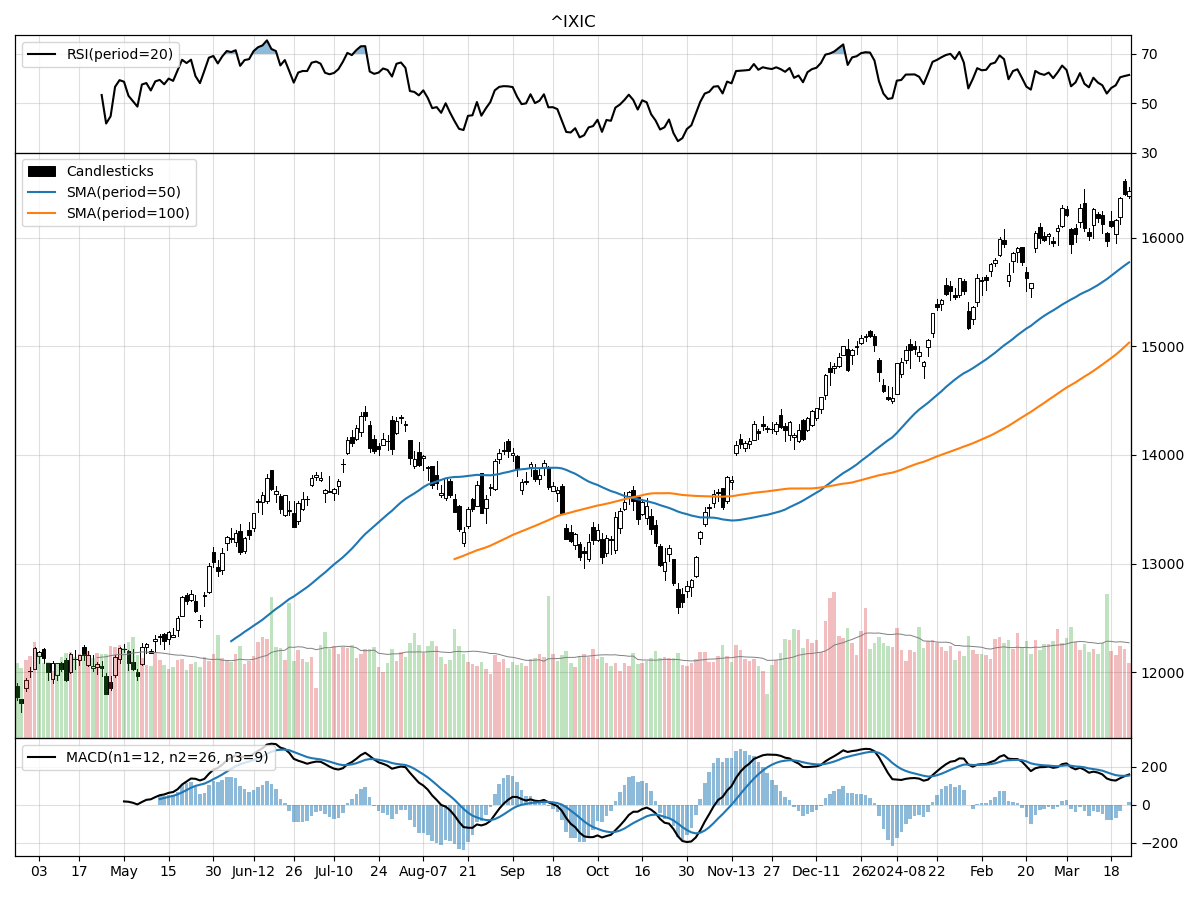
Russell 2000
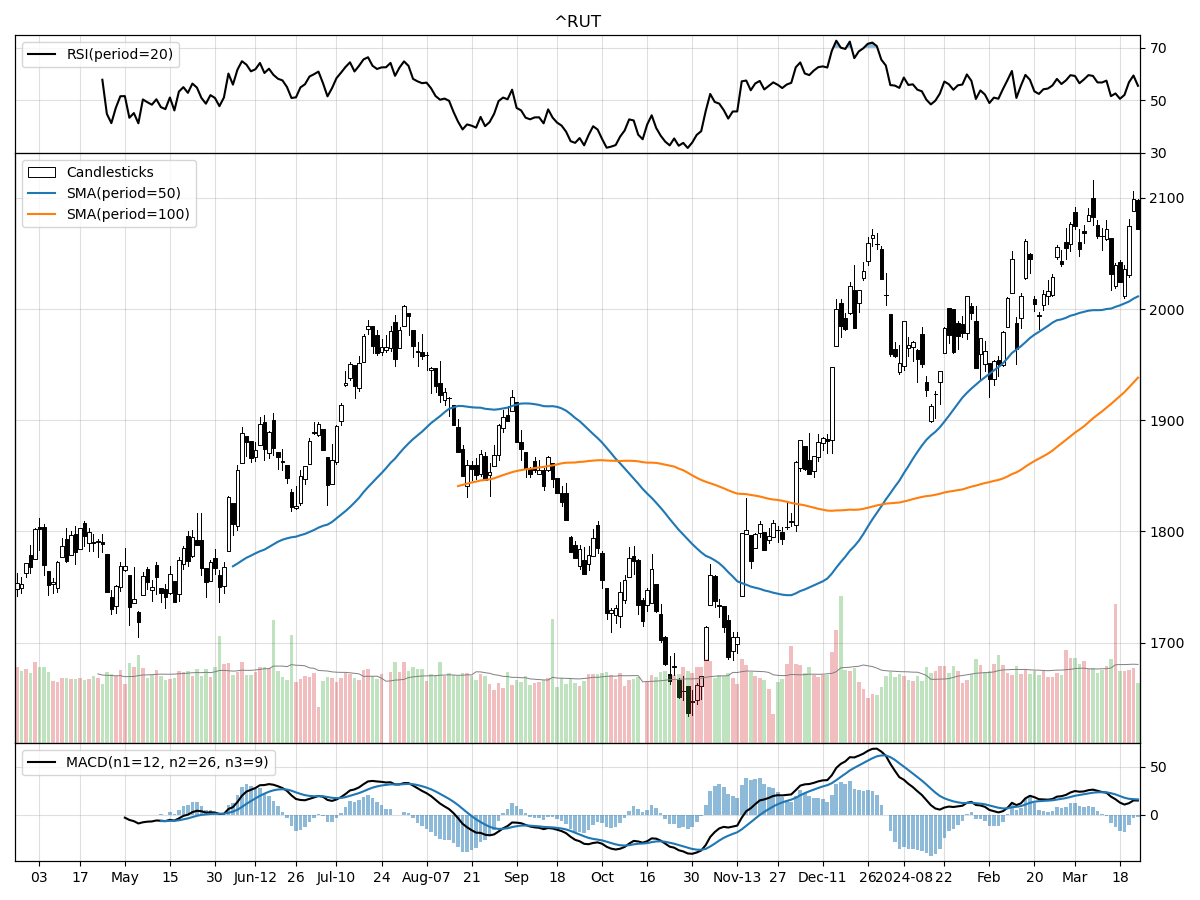
As of the provided data points, the technical performances of the S&P 500, Nasdaq, and Russell 2000 indices present a mixed picture with some common bullish signals but also diverging trends in terms of money flow and relative strength.
The S&P 500 and Nasdaq have both shown strong price performance, with the S&P 500 currently at its 52-week high and the Nasdaq also near its peak, although the Nasdaq is exhibiting moderate selling pressure according to money flow indicators. This divergence could suggest that while the broader market represented by the S&P 500 is experiencing steady accumulation, tech-heavy Nasdaq may be facing some profit-taking or rotation out of tech stocks. Both indices have seen a significant rise over the last three months, with the S&P 500 up by approximately 9.47% and the Nasdaq by about 8.81%. This upward trend is further supported by bullish MACD readings for both indices, although the Nasdaq's MACD is notably higher.
In contrast, the Russell 2000 index, which tracks small-cap stocks, is not performing as robustly. While it is above its 52-week low by 26%, it has remained relatively stable over the past month and three months. This stability might be interpreted as a period of consolidation or a lack of clear directional momentum. Money flow indicators suggest moderate selling pressure, and similarly to the Nasdaq, it is under distribution. The bullish MACD for the Russell 2000 is considerably lower than that of the other two indices, indicating less bullish strength behind its recent price movements.
In summary, the S&P 500 is demonstrating the strongest technical signals among the three, with steady accumulation and a bullish trend. The Nasdaq, while still bullish, is facing some selling pressure, which bears watching for potential shifts in investor sentiment. The Russell 2000's performance is more subdued, with less clear momentum and signs of distribution, which could indicate a more cautious stance among investors towards small-cap stocks. Overall, investors should consider these divergent trends along with broader market conditions, and individual risk tolerance when making investment decisions.
Last week vs. history (Large Cap S&P 500)
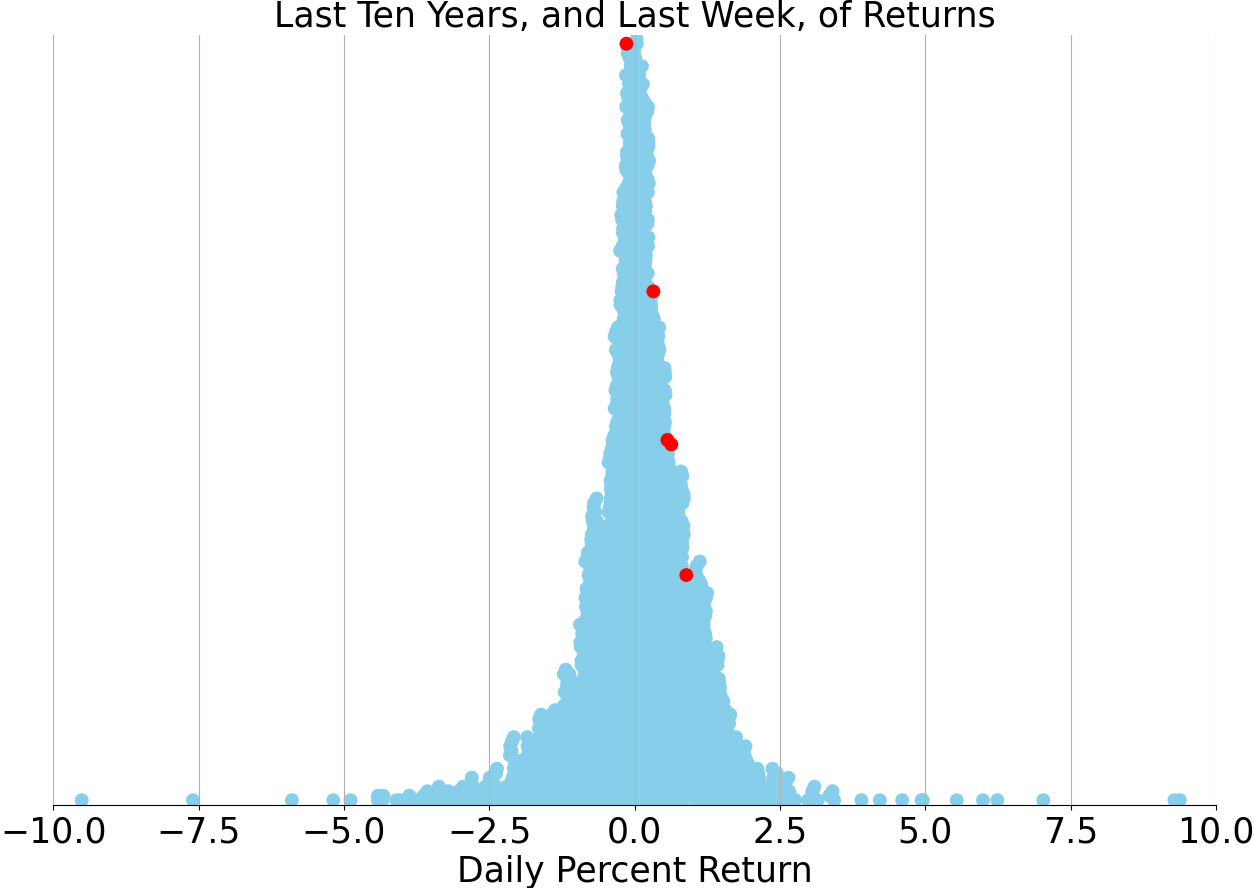
Market Commentary
Fed Signals Potential Rate Cuts Amidst Global Central Bank Shifts
As the financial world scrutinizes the latest signals from the Federal Reserve, a collective sigh of relief seems to be emerging from the markets. The Fed's recent projections, steadfast from their December stance, suggest a trio of 0.25% rate cuts in 2024, a move that could potentially ease the monetary stranglehold that has defined recent policy.
The central bank's median projections, disclosed during the March meeting, also paint a more optimistic picture for U.S. real GDP growth over the next few years. With numbers ticking upwards for 2024 through 2026, there appears to be a growing confidence in the resilience of the U.S. economy, despite the headwinds faced in the past year.
This confidence is mirrored in the Fed's actions concerning its balance sheet. From its peak in 2022, the size of the balance sheet has been reduced significantly, signaling a deliberate tightening of monetary conditions. This has been a crucial step in managing inflationary pressures and is indicative of the Fed's commitment to restoring economic stability.
The narrative, however, isn't solely American. Last week, the global central banking community seemed to move in concert with the Fed's dovish tone. The European Central Bank (ECB), the Bank of Canada (BoC), and the Bank of England (BOE) are all expected to lean towards rate cuts later this year. The Swiss National Bank took a decisive step, cutting rates by 0.25% to 1.5%, while the BOE held rates steady, with market expectations of reductions starting around August.
In stark contrast, the Bank of Japan (BoJ) has bucked the trend, raising rates for the first time in 17 years. This departure from a long-standing negative interest-rate policy reflects Japan's unique economic challenges and recent improvements in inflation, wage growth, and economic performance. The Nikkei stock index and Japanese bond yields have both responded positively to these developments, signaling a shift in the economic landscape.
The markets have welcomed the Fed's dovish stance, with the S&P 500 climbing over 2% last week. This rally wasn't just confined to large-cap stocks; small and mid-cap indexes outperformed the broader market, with sectors like financials, energy, and industrials contributing significantly. The bond market also saw a boost, with investment-grade bonds performing well as Treasury yields dipped post-Fed meeting.
As we look ahead, the theme of broadening market participation is poised to continue. With potential Fed rate cuts, easing inflation, and improved earnings growth on the horizon, we recommend investors embrace volatility as an opportunity to diversify their portfolios. Preference towards large-cap and mid-cap stocks, alongside cyclical and value sectors like industrials, consumer discretionary, and utilities, may be prudent. In the fixed income space, extending duration with investment-grade bonds seems a strategic move in anticipation of future rate cuts and a lower-yield environment.
Investors should bear in mind that while market trends provide insights, they should always align their investment decisions with their individual financial goals and risk tolerance. The dynamic nature of markets means that adaptability and due diligence remain key to navigating the ever-changing financial landscape.
AI stock picks for the week (Large Cap S&P 500)



